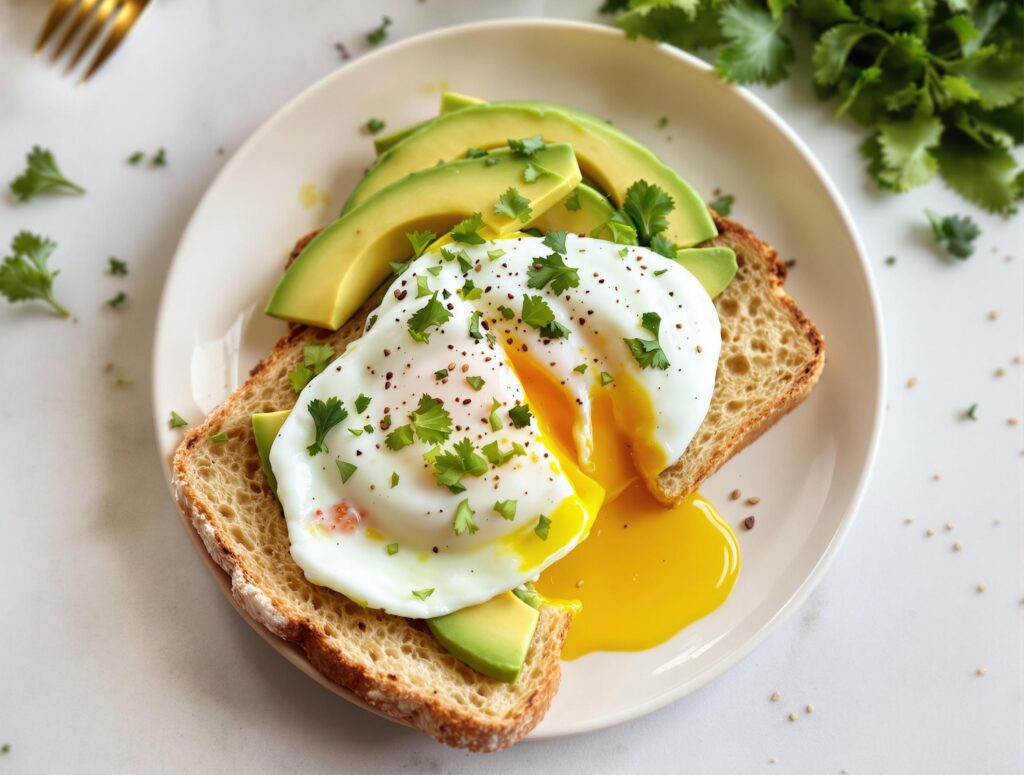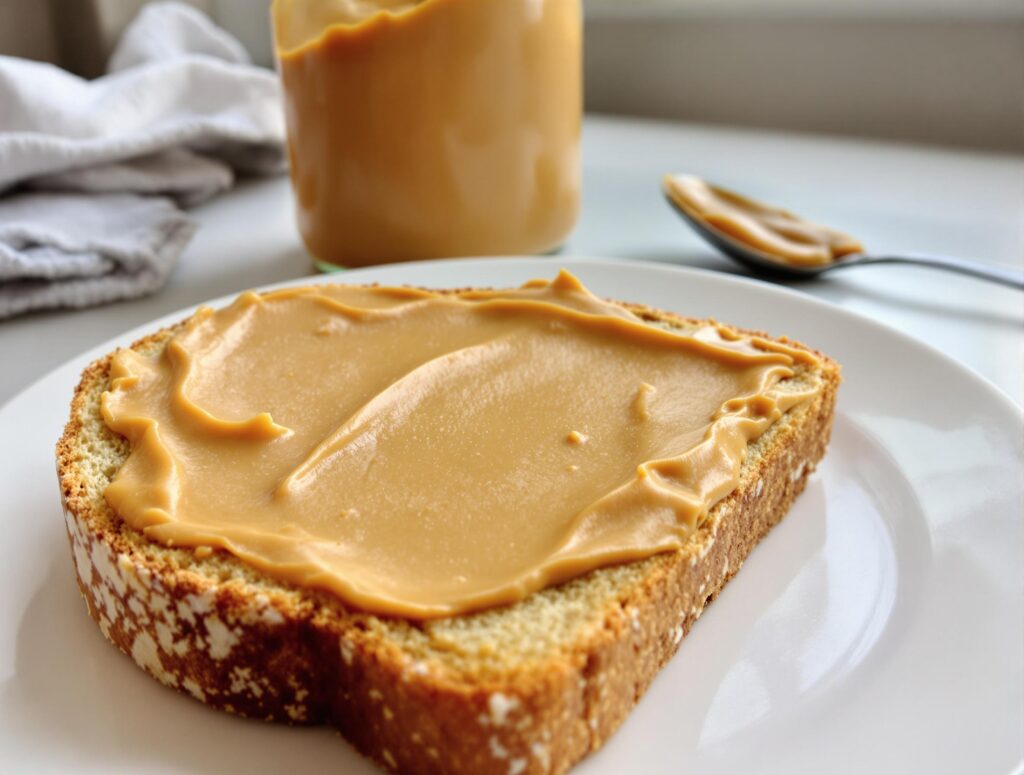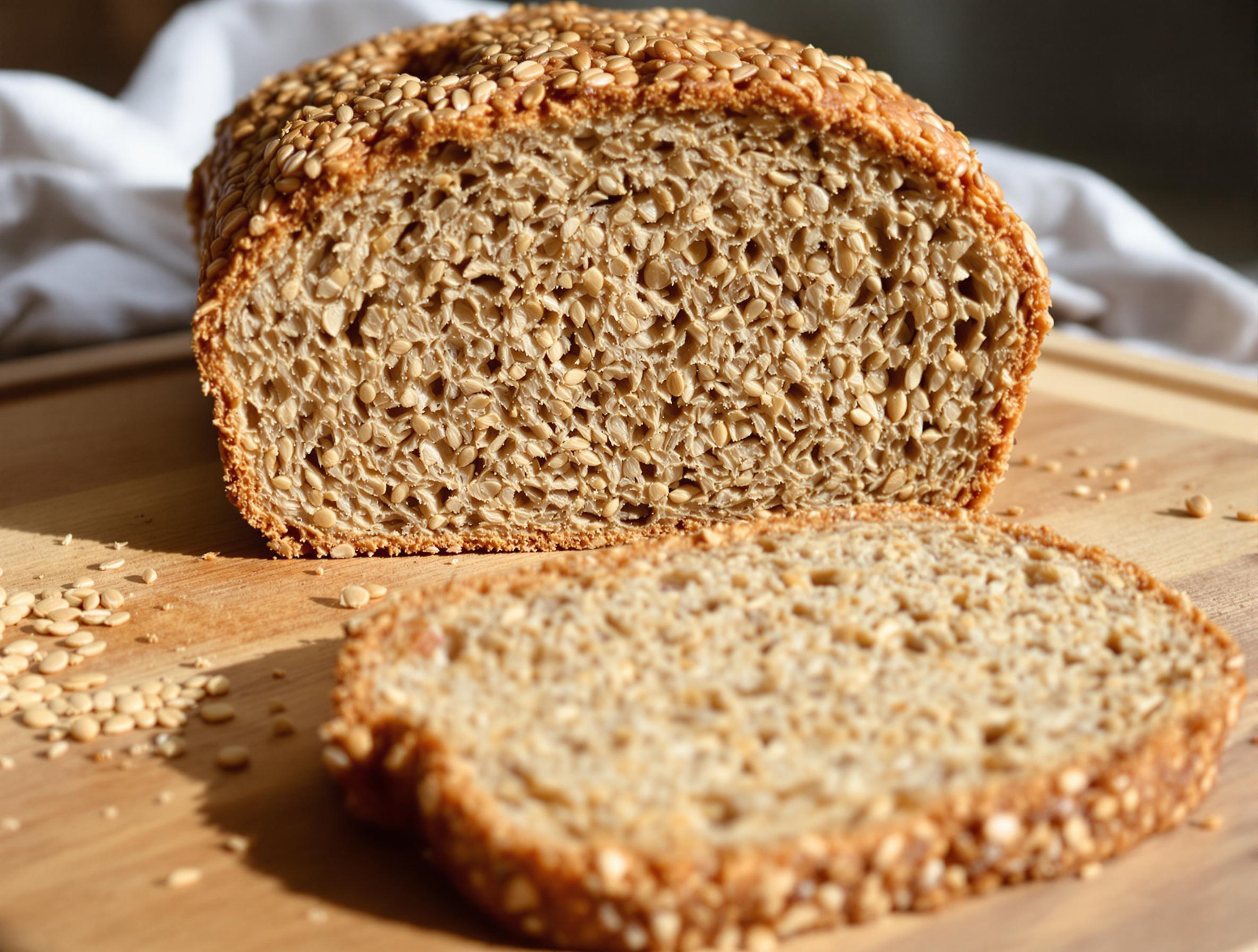What Bread Is a Complete Protein? Proteins are important for your body. They help build your muscles, skin, and bones. But not all proteins are the same. Some foods have “complete proteins,” which means they contain all the essential amino acids.
You might wonder: What bread is a complete protein? Can bread really provide all the essential amino acids? The answer depends on the type of bread and what you eat with it. In this article, we will explain what complete proteins are, which breads can be a complete protein, and how you can enjoy bread in a healthy way.
What is a Complete Protein?
A complete protein is a type of food that has all the nine essential amino acids your body needs. Amino acids are like building blocks for proteins. Your body cannot make these essential amino acids on its own, so you have to get them from food.
For example, foods like eggs, chicken, fish, and milk are complete proteins because they provide all the amino acids your body needs. These amino acids help your body repair tissues, grow muscles, and stay healthy.
Why Are Complete Proteins Important?
Complete proteins are important because they:
- Help your body build and repair muscles.
- Keep your skin, hair, and nails strong.
- Support your immune system to fight diseases.
- Provide energy to stay active throughout the day.
If you don’t get enough complete proteins, your body might feel tired, and it can’t repair itself properly. That’s why eating the right foods is so important.
Can Bread Be a Complete Protein?
Now, let’s talk about bread. Regular bread is not usually a complete protein because it does not contain all nine essential amino acids on its own. Most breads are made from wheat, and wheat protein lacks enough of one important amino acid called lysine.
However, bread can still become a complete protein if:
- It’s made from special grains like sprouted or whole grains.
- You pair it with other foods that provide the missing amino acids.
For example, when you eat bread with peanut butter or hummus, you get a meal that has all the amino acids your body needs.
So, while bread alone may not always be a complete protein, certain types of bread or combinations can make it a healthy source of protein.
Types of Bread That Are Complete Proteins

Some types of bread can be considered complete proteins because of the way they are made or the ingredients they include. Let’s look at a few of them:
1. Sprouted Grain Bread
Sprouted grain bread is made from grains that have started to grow (or sprout). When grains sprout, their nutrient levels increase, and they become easier to digest. This type of bread contains more protein compared to regular bread.
- Why it’s a complete protein:
Sprouted grain bread is often made with a mix of grains and legumes, like wheat, barley, and lentils. Together, these ingredients provide all the essential amino acids, making it a complete protein. - Health benefits:
- High in protein and fiber
- Easier to digest than white or whole wheat bread
- Contains vitamins like B6 and folate
2. Ezekiel Bread
Ezekiel bread is a special kind of sprouted grain bread. It is made with a mix of grains and legumes, such as:
- Sprouted wheat
- Barley
- Millet
- Lentils
- Soybeans
This unique mix gives Ezekiel bread a higher protein content and all the amino acids your body needs.
- Why it’s a complete protein:
The combination of grains and legumes ensures that no amino acid is missing. Unlike regular bread, Ezekiel bread offers a full protein source that your body can use effectively. - Health benefits:
- Rich in protein and amino acids
- Low in sugar compared to white bread
- Packed with fiber for better digestion
3. Other Protein-Rich Breads
Some modern breads are made with extra protein-rich ingredients, such as:
- Quinoa: A grain that is naturally a complete protein. Adding quinoa flour to bread boosts its amino acid content.
- Soy Flour: Bread made with soy flour can have higher protein and all the essential amino acids.
- Chia Seeds or Hemp Seeds: These seeds contain complete proteins and are often added to bread recipes to improve their protein value.
While these breads may not be as common as sprouted grain or Ezekiel bread, they are great options if you want bread that provides complete protein.
How to Know if Your Bread Has Complete Protein
To check if bread is a complete protein, look at the ingredients on the label. Here are some tips:
- Look for breads that use a mix of grains and legumes, like lentils or soybeans.
- Choose breads labeled “sprouted grain” or “high protein.”
- Look for ingredients like quinoa, chia seeds, hemp seeds, or soy flour.
By choosing the right bread, you can enjoy a delicious, protein-packed meal that gives your body all the amino acids it needs.
Combining Bread with Other Foods to Make a Complete Protein

If you can’t find sprouted or protein-rich breads, don’t worry! Regular bread can still be part of a complete protein meal when paired with the right foods. This is called food combining. By mixing bread with other protein sources, you can make sure you’re getting all the essential amino acids.
Here are some simple and tasty combinations:
1. Bread and Peanut Butter
Peanut butter is rich in protein, but it doesn’t have all the amino acids your body needs. When you spread peanut butter on bread, the combination completes the amino acid profile.
- Why it works:
Bread is low in lysine but has enough of other amino acids. Peanut butter is high in lysine, so they balance each other out perfectly. - Health benefits:
- High in protein to keep you full
- Provides healthy fats for energy
- Easy and quick to prepare
2. Bread and Hummus
Hummus is made from chickpeas, which are high in protein and fiber. When you eat hummus with whole-grain bread, you get a complete protein meal.
- Why it works:
Chickpeas provide the amino acids that bread lacks, creating a balanced protein source. - Health benefits:
- High in protein and fiber for better digestion
- Low in fat, making it a healthy option
- Packed with vitamins like iron and folate
3. Bread and Cheese
Cheese is a great source of complete protein. When you enjoy bread with cheese (like in a grilled cheese sandwich), you get all the amino acids you need in one meal.
- Why it works:
Cheese already has complete protein. Adding it to bread boosts the overall protein content of your meal. - Health benefits:
- High in calcium for strong bones
- Rich in protein for muscle repair
- Tasty and satisfying for any time of day
4. Bread and Eggs
Eggs are one of the best sources of complete protein. Pairing eggs with whole-grain bread, like in a classic toast and eggs breakfast, makes a balanced and filling meal.
- Why it works:
Eggs provide all nine essential amino acids, so they complete the protein that bread lacks. - Health benefits:
- Great for muscle growth and recovery
- Provides energy to start your day
- Packed with vitamins and healthy fats
5. Bread and Lentil Soup
Lentils are high in protein and fiber. Eating a slice of bread with lentil soup is another easy way to create a complete protein meal.
- Why it works:
Lentils provide lysine, the amino acid that bread lacks, completing the protein. - Health benefits:
- Keeps you full for longer
- Supports heart health with fiber
- Provides plant-based protein for vegetarians
Why Combining Foods Matters
Combining bread with other protein-rich foods is a great way to make sure you get all the essential amino acids your body needs. This is especially helpful for people who don’t eat meat or animal products. By mixing simple ingredients, you can create balanced, protein-rich meals that are healthy and delicious.
Health Benefits of Complete Proteins
Eating complete proteins is essential for your body to function well. These proteins provide all the amino acids that your body cannot make on its own. Let’s explore the key benefits of including complete proteins, like certain types of bread or food combinations, in your diet.
1. Builds and Repairs Muscles
Complete proteins are the building blocks for your muscles. When you exercise, your muscle fibers get small tears. Eating foods with complete proteins helps repair these tears and build stronger muscles.
- Why it matters:
If you want to grow stronger or stay active, eating enough protein is a must. Athletes, kids, and anyone who works out regularly need complete proteins for better muscle recovery.
2. Supports Growth and Development
For children, teens, and even adults, protein plays a key role in growth and development. Your body uses protein to make new cells, build tissues, and keep your organs working properly.
- Why it matters:
Growing kids need complete proteins to help their bones, skin, and muscles develop. Without enough protein, growth can slow down.
3. Boosts Energy Levels
Protein provides energy that lasts longer than sugar or simple carbs. While bread alone can give you energy, pairing it with protein-rich foods makes the energy release steady and long-lasting.
- Why it matters:
Eating bread with peanut butter or eggs can keep you full and energized for hours, reducing hunger between meals.
4. Strengthens the Immune System
Your immune system uses amino acids from proteins to make antibodies. Antibodies are like bodyguards that protect you from bacteria and viruses.
- Why it matters:
Eating enough complete proteins helps keep your immune system strong so you can fight off colds and infections.
5. Keeps Hair, Skin, and Nails Healthy
Proteins like keratin and collagen are essential for healthy hair, skin, and nails. Complete proteins provide all the amino acids your body needs to produce these proteins.
- Why it matters:
Without enough protein, you may notice brittle nails, hair loss, or dry skin. Eating protein-rich bread with foods like eggs or cheese can improve your skin and hair health.
6. Helps Maintain a Healthy Weight
Protein is great for helping you feel full for a longer time. Foods rich in complete proteins can reduce cravings and prevent overeating.
- Why it matters:
When you pair bread with protein sources like hummus, peanut butter, or cheese, you create a balanced meal that keeps you satisfied and supports healthy weight management.
How Complete Proteins Benefit Vegetarians
For people who don’t eat meat, getting enough protein can be tricky. Foods like bread, lentils, beans, nuts, and grains are often part of their diets, but they may not provide all the amino acids on their own. By combining these foods—like bread and peanut butter or bread and lentil soup—vegetarians can easily get the complete proteins their bodies need.
you might also like :
If you love experimenting with unique flavor profiles, take a look at our guide to protein bread, 4-ingredient peanut butter cookies, and deviled eggs for more inspiration. Protein bread offers a nutritious twist on a classic staple, packed with seeds, sprouted grains, and legumes to keep you full and energized.
FAQs
Here are some of the most common questions about bread and complete proteins, along with simple and clear answers.
1. What does “complete protein” mean?
A complete protein is a food that has all nine essential amino acids your body needs to stay healthy. Your body cannot make these amino acids on its own, so you have to get them from the foods you eat.
2. Is regular bread a complete protein?
No, regular bread is not a complete protein on its own because it is low in one amino acid called lysine. However, you can combine bread with foods like peanut butter, cheese, or eggs to make it a complete protein.
3. What are amino acids?
Amino acids are the building blocks of protein. Your body needs 20 amino acids to function properly. Nine of these are called essential amino acids because your body cannot produce them. You must get these from the food you eat.
4. Can I eat bread as my main protein source?
Bread alone does not provide enough protein to be your main source. However, if you eat special types of bread, like sprouted grain bread or Ezekiel bread, or pair regular bread with protein-rich foods, you can get the complete protein your body needs.
5. What other foods are complete proteins?
Here are some examples of foods that are complete proteins:
- Eggs
- Fish and chicken
- Dairy products like milk, yogurt, and cheese
- Quinoa
- Soybeans and tofu
Combining plant-based foods, like bread with beans or rice with lentils, can also create a complete protein.
6. What’s the best bread for protein?
The best types of bread for protein are:
- Sprouted grain bread: Made from grains that have started to grow.
- Ezekiel bread: A mix of grains and legumes that provides all the essential amino acids.
- Breads with quinoa, soy flour, or seeds like chia or hemp.
These breads have higher protein content and can act as complete proteins on their own.
Conclusion
Getting enough complete protein is important for your body to grow, stay strong, and stay healthy. While regular bread may not be a complete protein, you can choose better options like sprouted grain bread or Ezekiel bread. You can also pair bread with foods like peanut butter, hummus, cheese, or eggs to get all the amino acids your body needs.
By making smart food choices, you can enjoy bread as part of a healthy and balanced diet. Whether you’re looking to build muscles, stay energized, or just eat well, complete proteins can help you feel your best every day!

